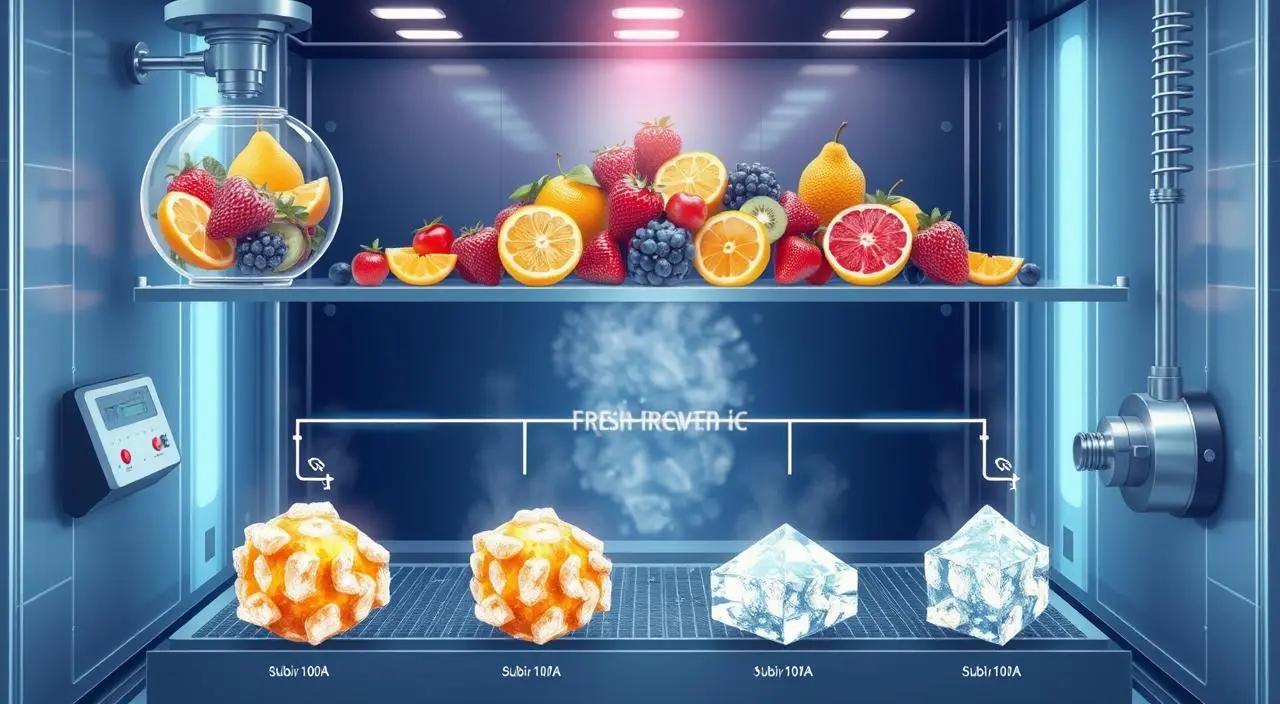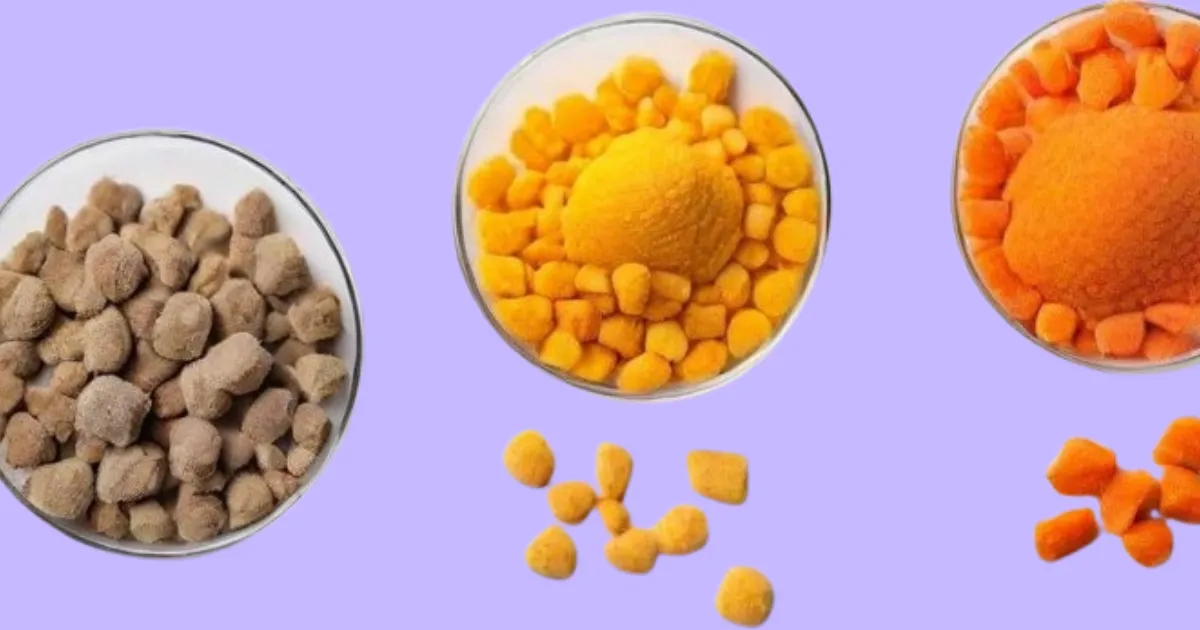Freeze Drying Time Chart: Essential Guide
The global freeze drying market is set to hit $77.2 billion by 2025. This growth is fueled by the need for precise freeze-drying time charts. These charts are key for preserving everything from lifesaving drugs to tasty foods. This guide will give you the skills to improve your freeze-drying cycles.
If you work in pharmaceuticals, food production, or just love the science behind freeze drying, this article is for you. We’ll explore freeze drying’s basics, what affects drying time, and a detailed chart for common items. Get ready to boost your operations with this powerful technology.
Key Takeaways
- The global freeze drying market is expected to reach $77.2 billion by 2025, highlighting the importance of this technology.
- Freeze drying, also known as lyophilization, is a critical process for preserving a wide range of products in the pharmaceutical and food industries.
- Understanding the principles of freeze drying and the factors that affect the process is essential for optimizing your freeze drying cycles.
- This guide provides a comprehensive freeze drying time chart to help you plan and execute your freeze drying operations effectively.
- The freeze drying time chart covers common products in the pharmaceutical and food industries, enabling you to tailor your processes for maximum efficiency.
Understanding Freeze-Drying Times
What is Freeze Drying?
This process uses sublimation, where water goes from solid to gas without turning liquid first. This method keeps the product’s taste, structure, and nutrients intact. It’s why it’s used in things like medicine and food.
Principles of Lyophilization
Lyophilization is all about sublimation, desorption, and condensation. These steps work together to take water out of the product without harming it. First, the product is frozen. Then, the pressure drops, making the ice turn into vapor. This vapor is then collected and taken out of the system.
| Principle | Description |
|---|---|
| Sublimation | The direct transition of a solid (ice) to a gas (water vapor), bypassing the liquid phase. |
| Desorption | The removal of water molecules that are adsorbed or bound to the product’s surface or internal structure. |
| Condensation | The conversion of water vapor into a solid state, which is then removed from the system. |
Importance of Freeze Drying Time Chart
The freeze drying time chart is key in freeze drying. It gives you the best times for each step, helping you keep your products fresh. By controlling temperature and pressure, you get great results every time.
Knowing the freeze-dry time chart is important for many reasons:
- It tells you the right drying time for your product. This prevents it from drying too much or too little, keeping your product top quality.
- The freeze drying chart lets you make the process better. You can save time and money by doing things right.
- Using the freeze drying time chart means you get the same good results every time. This makes your freeze-dried products better and more reliable.
If you work in pharmaceuticals, food, or any field using freeze drying, the freeze drying time chart is a must-have. It helps you handle freeze drying well. With it, you can make amazing products for your customers.
Why choose freeze-drying?
Here are the key benefits of using freeze dryers:
- Longevity: Foods preserved through technology can last for years without losing taste or nutritional value.
- Nutritional Retention: Essential nutrients remain intact, making this an ideal choice for maintaining food’s health benefits.
- Economic Efficiency: Reduce food waste by preserving seasonal items and bulk purchases.
- Versatility: Capable of freeze-drying a wide array of products, from fruits to full meals, catering to various dietary needs.
- User-Friendliness: Simple to operate, even for beginners, with automated features that adjust to specific freeze-drying needs.
Overview of Freeze-Drying Times
- Efficient food preservation requires knowledge of the average freeze-drying periods for different food varieties.
- Depending on the kind and quantity of food, the procedure may take several hours or days.
- This variation can have a big impact on the end product’s quality as well as the amount of energy utilized, which makes it essential for planning.
What Factors Influence Freeze-Drying Times?
Several factors can affect how long it takes to freeze dry different products. Here are the key factors, each explained to provide a clearer understanding:
- Moisture Content: Foods with a higher moisture content take longer to dry. For instance, juicy fruits like oranges may require more time compared to herbs.
- Material Type: Different food types dry at different rates. Meats are denser and typically take longer than lighter vegetables or fruits.
- Temperature and Humidity Conditions: High humidity or lower temperatures can slow the freeze-drying process, requiring more energy to remove moisture.
- Freezer Capacity and Load: The amount of food being dried and the capacity of the freeze dryer also play significant roles. A fuller load requires more time.
- Initial Freezing Temperature: The colder the food is when placed into the dryer, the quicker the sublimation phase can occur, as less energy is needed to freeze the product further.
Freeze-Drying Time Chart
|
Pharmaceuticals Industries |
|
|
|
|
|
|
|
Biologicals |
3-5 hours |
24-31 hours |
12-18 hours |
40-50 hours |
|
|
Vaccines |
4-6 hours |
22-26 hours |
9-14 hours |
34-46 hours |
|
|
Enzymes |
2-6 hours |
15-22 hours |
8-13 hours |
27-38 hours |
|
Specialty Items |
|
|
|
|
|
|
|
Floral Products |
2-5 hours |
12-16 hours |
6-9 hours |
21-27 hours |
|
|
Nutraceuticals |
4-6 hours |
18-25 hours |
9-15 hours |
32-43 hours |
|
|
Museum Specimens |
2-5 hours |
45-22 hours |
6-11 hours |
225-36 hours |
|
Cannabis-type Products |
|
|
|
|
|
|
|
Cannabis (buds) |
3-5 hours |
11-16 hours |
7-11 hours |
24-31 hours |
|
|
Cannabis (edibles) |
4-6 hours |
18-23 hours |
11-13 hours |
34-40 hours |
Having a reliable freeze-drying time chart is key for great results. It shows how long each stage of freeze drying takes, like freezing, primary drying, and secondary drying. It also lists the temperatures and pressures needed for each step. This chart helps you make sure your products are freeze-dried perfectly, keeping their quality and taste.
The freeze drying time chart is a must-have for freeze drying. It tells you how long each part of the process takes. This lets you plan and do the freeze drying just right. It’s useful for pharmaceuticals, food, or any other delicate items, helping you get top-notch results every time.
The chart also shows the freeze drying temperature and pressure settings. Knowing these details lets you adjust the process for your products. This way, the dried goods keep their taste, flavor, and texture as they should.
| Stage | Time (hours) | Temperature (°C) | Pressure (mbar) |
|---|---|---|---|
| Freezing | 6-12 | -40 to -80 | N/A |
| Primary Drying | 12-48 | -20 to -10 | 0.1-0.5 |
| Secondary Drying | 6-12 | 20-40 | 0.05-0.1 |
Using the freeze drying time chart and knowing the right temperatures and pressures helps you freeze dry your products well. This ensures your products are always of high quality and benefits from this advanced drying method.
Tips to Reduce Freeze-Drying Times
- Pre-Freeze Your Products: Pre-freeze food to lower its initial temperature, cutting down the total freeze-drying time.
- OptimizeFoodPlacement: To expose more surface area and speed up the removal of moisture, arrange food in a single layer without overlap.
- Slice Food Thinly: Use thin slices to reduce mass and increase surface area, speeding up the freeze-drying process.
- Adjust Settings for Specific Foods: Customize the freeze dryer settings for temperature and pressure based on the food type.
- Ensure Proper Maintenance of the Freeze Dryer: Regularly maintain the freeze dryer by cleaning the vacuum pump and checking seals and filters to ensure peak efficiency.
Common Problems and Solutions During Freeze Drying
Freeze drying is usually straightforward, but sometimes issues can arise. Knowing these common problems can help you troubleshoot more effectively.
- Extended Drying Times: If the process is taking longer than usual, check for vacuum seal leaks and ensure there’s no ice buildup on the condenser, which can delay drying.
- Uneven Drying: Spread the load evenly across trays and avoid overloading to ensure consistent drying.
- Incomplete Drying: Some foods may have a higher moisture content and need longer drying times than preset. Adjust the final dry time in your settings.
- Mechanical Issues: Regular maintenance is crucial. If you notice unusual noises or behavior, refer to the manual or contact technical support.
- Power Failures: Use a surge protector to protect your equipment from power spikes and ensure it runs smoothly during power interruptions.
Advanced Techniques and Considerations
Elevating your freeze-drying process involves more than just the basics. Here’s how you can enhance your methods with advanced techniques:
- Layering Strategy: Optimize each cycle by layering different types of food with similar drying times together.
- Use of Absorbents: For very moist foods, place absorbent materials like silicon gel near the trays to help absorb excess humidity and speed up the process.
- Pre-treatment of Foods: Pre-treatments such as blanching vegetables or marinating meats can alter drying times and improve the texture of rehydrated products.
- Vacuum Level Adjustments: Experiment with different vacuum pressures to find the optimal level that reduces drying time without compromising food quality.
- Temperature Fine-Tuning: Adjust temperatures based on the characteristics of the food. While higher temperatures can speed up the process, they might degrade the nutrient quality of sensitive items.
Conclusion
Understanding freeze drying times is crucial for maximizing your freeze dryer’s efficiency and output. This guide, including the freeze drying time chart, is an essential tool for optimizing your drying processes.
By applying the tips and addressing the common issues discussed, you can improve the quality and preservation of various products. Embrace these strategies to ensure productive freeze-drying efforts, extending the longevity and quality of your food, pharmaceuticals, or other perishable materials.
FAQs
What are the key benefits of using freeze dryers for food preservation?
Key benefits of using freeze dryers for food preservation: Freeze dryers offer benefits such as prolonged shelf life without loss of taste or nutrients, retention of essential nutrients, economic efficiency by reducing food waste, versatility in preserving various types of food, and user-friendly operation.
Which factors influence the freeze-drying times for different products?
Factors influencing freeze-drying times for different products: Factors include moisture content of the food, thickness of food slices, type of material being dried (e.g., meats vs. fruits), temperature and humidity conditions during drying, freezer capacity and load, and the initial freezing temperature of the food.
What are some tips to reduce freeze-drying times and enhance efficiency?
Tips to reduce freeze-drying times and enhance efficiency: Pre-freeze products to lower the initial temperature, arrange food in a single layer without overlap to expose more surface area, slice food thinly for quicker drying, customize freeze dryer settings for specific food types, and maintain the freeze dryer regularly.
How does understanding freeze-drying times contribute to the quality and preservation of various products?
Contribution of understanding freeze-drying times to product quality and preservation: Understanding freeze-drying times ensures optimal drying without compromising product integrity, thus preserving quality, appearance, and nutritional value effectively.
What are common problems encountered during freeze drying, and how can they be resolved?
Common problems encountered during freeze drying and their solutions: Issues include extended drying times, uneven drying, incomplete drying, mechanical problems, and power failures. Solutions involve checking for vacuum seal leaks, preventing ice buildup, ensuring even tray loading, adjusting drying times, performing regular maintenance, and using surge protectors.

